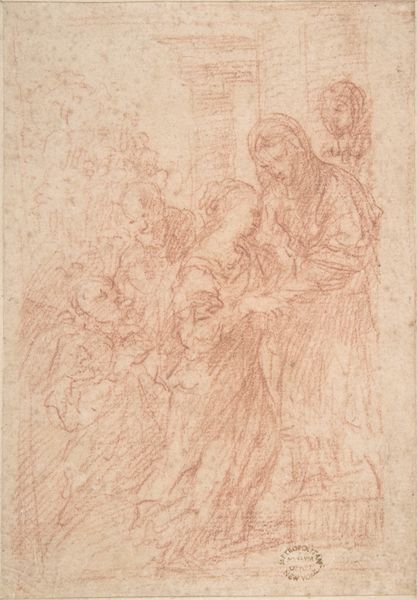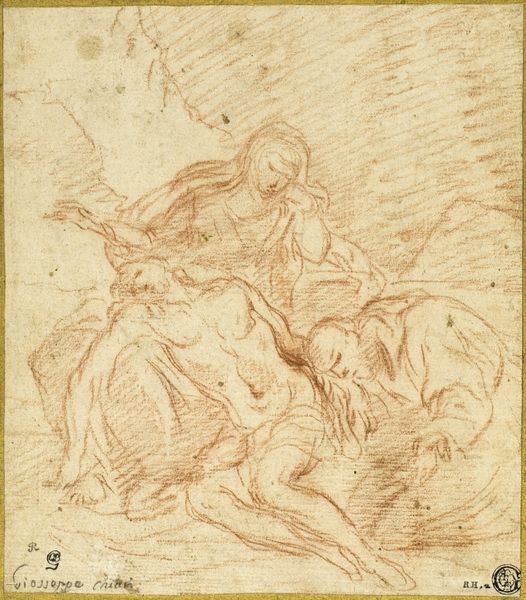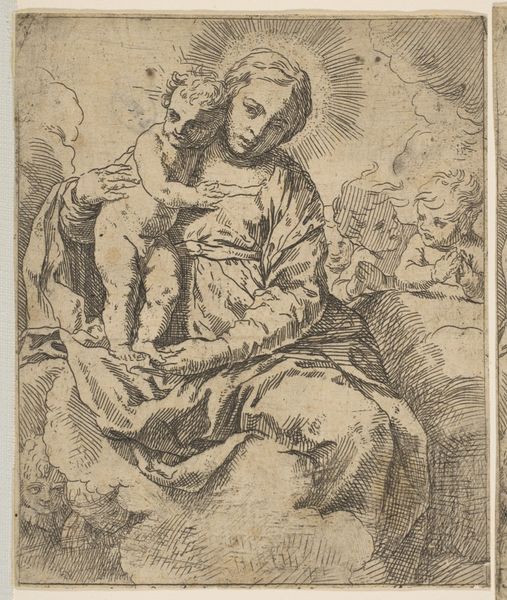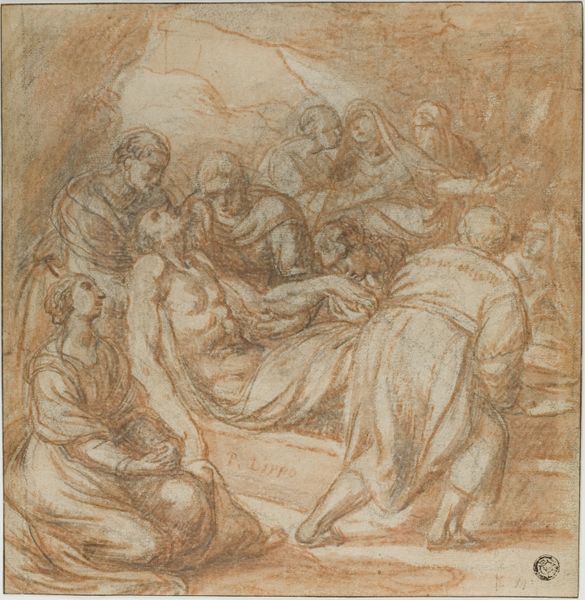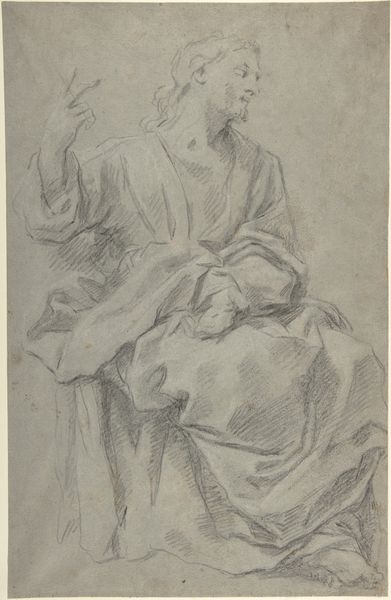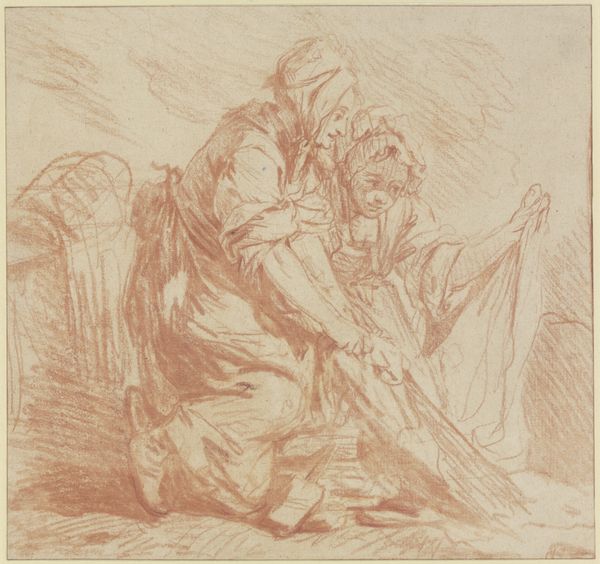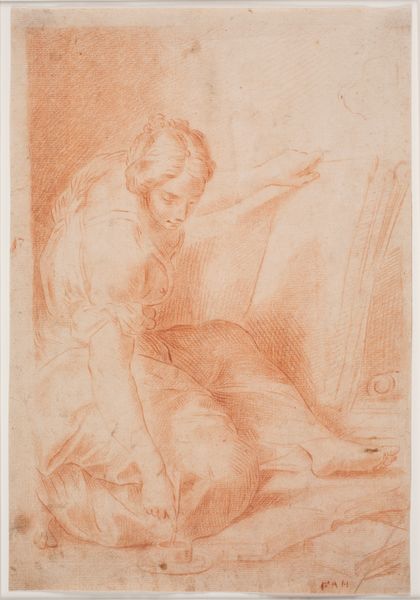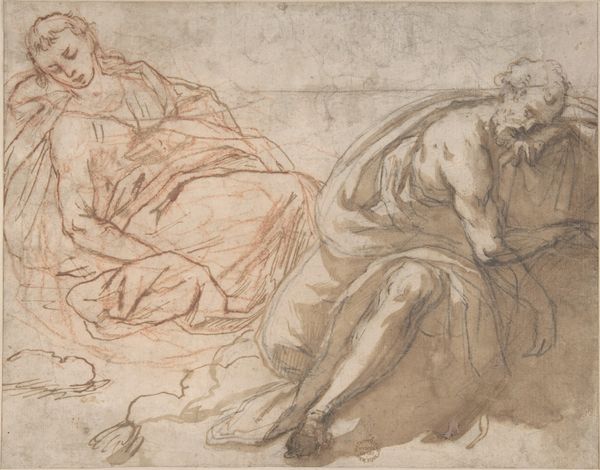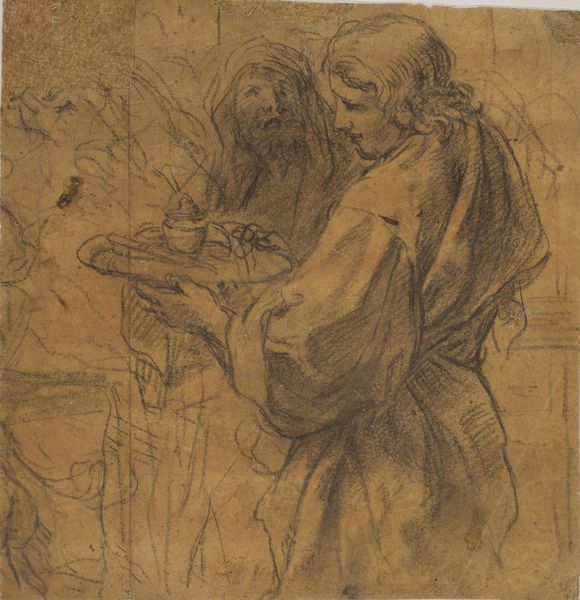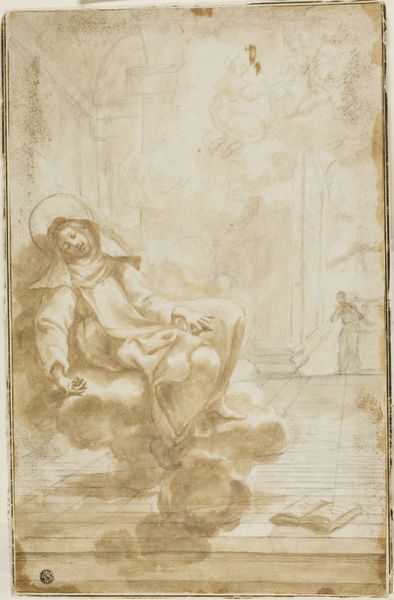
drawing, print, paper, chalk
#
drawing
# print
#
charcoal drawing
#
paper
#
chalk
#
history-painting
#
rococo
Dimensions: 193 × 141 mm
Copyright: Public Domain
Editor: Here we have "Mater Dolorosa," a chalk and paper drawing dating back to the 18th century by Pierre Hubert Subleyras. I'm really drawn to how the texture of the chalk creates such a soft, almost dreamlike quality, even with such a weighty subject. What can you tell me about this piece? Curator: Looking at the work, the material reality of 18th-century chalk drawings provides a direct connection to workshops and studios. Subleyras’s choice of red chalk – readily available and relatively inexpensive – reveals certain considerations of accessibility, both for the artist and, later, the consumers of his art, in comparison to richer materials like oils. Notice, too, how the application of the chalk suggests a kind of labor-intensive process, from quarrying the pigment to grinding and shaping the sticks to actually applying them to paper. How might the drawing have functioned within this broader economy of image production? Editor: That’s interesting, the connection between material and consumption. It wasn't necessarily meant for some noble family, then? Was the image widely accessible because of that? Curator: Precisely. And considering the religious subject matter, think about who might have been buying prints made after drawings like these, and how their access to such imagery may have shifted devotional practices. Was there a broader shift in power dynamics associated with access to religious art at that time? What was the paper market like then? These are avenues worth considering. Editor: I hadn't thought about it in terms of access and shifts in power, I am beginning to understand a little better the economic value of it all. Thanks! Curator: My pleasure! Considering materiality invites us to think more expansively about an artwork's place in history and our present.
Comments
No comments
Be the first to comment and join the conversation on the ultimate creative platform.
